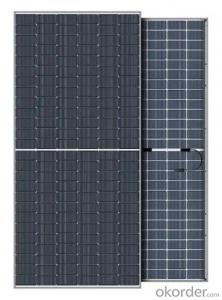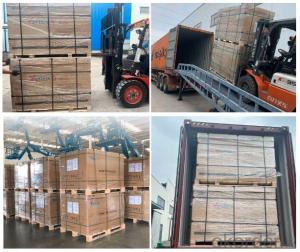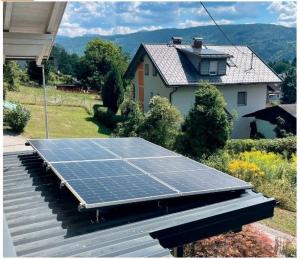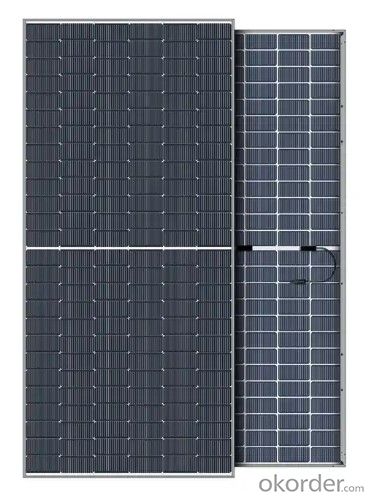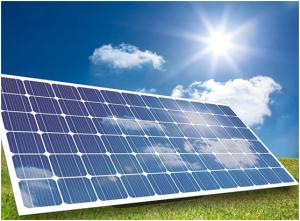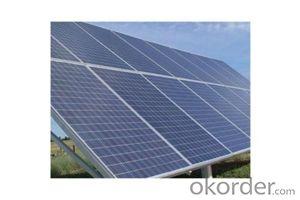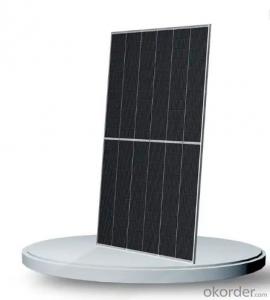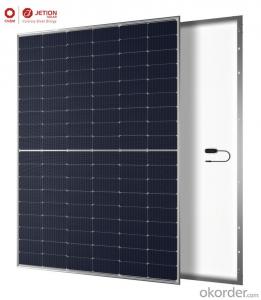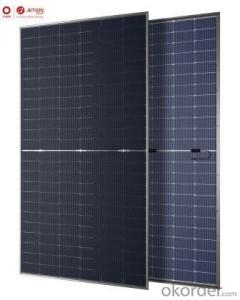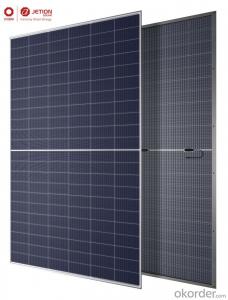Black Solar Module 700W Monocrystalline Panel Solar 680 Watt 700 Watt Half Cells Solar ModuleNCQ
- Loading Port:
- SHANGHAI
- Payment Terms:
- TT OR LC
- Min Order Qty:
- 10 pc
- Supply Capability:
- 100 pc/month
OKorder Service Pledge
OKorder Financial Service
You Might Also Like
Specification
Ø OPERATING PARAMETERSOPERATIN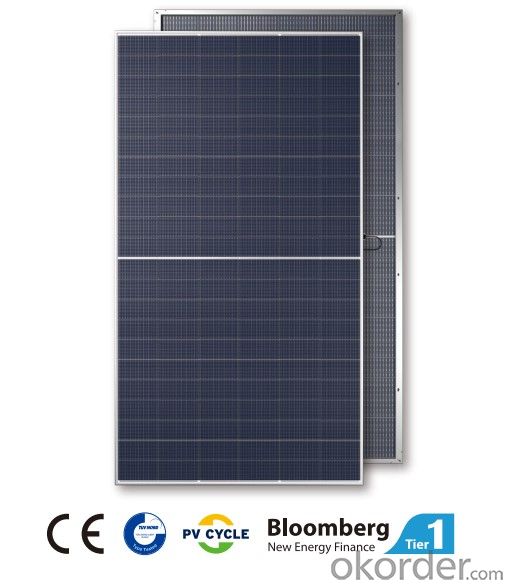
Maximum System Voltage | 1500V/DC(IEC) |
Operating Temperature | -40°C-+85°C |
Maximum Series Fuse | 35A |
Maximum Test Load,Push/Pull | 5400Pa/2400Pa |
Conductivity at Ground | ≤ 0.1Ω |
Safety Class | Ⅱ |
Resistance | ≥100MΩ |
Voc and Isc Tolerance | ±3% |
Bifaciality | 80±5% |
Ø MECHANICAL DATA
Solar Cell Type | Mono 210×105 mm(8.3×4.1 inches) |
Number of Cells | 132 [2 x (11 x 6) ] |
Module Dimensions | 2384×1303×35 mm(93.9×51.3×1.4 inches) |
Weight | 38.7 kg(85.3 lb) |
Front Cover | High transmission, AR coated tempered glass, 2.0mm |
Back Cover | High transmission, Tempered, White Grid Glass/AR coating(optional), 2.0mm |
Frame | Silver, anodized aluminium alloy |
J-Box | ≥IP68 |
Cable | 4.0 mm2 solar cable, ≥300 mm(11.8 inches)/customizable |
Number of diodes | 3 |
Connector | MC4 EVO2 compatible |
Ø PACKAGING CONFIGURATION
Module per pallet :31 pieces
Module per 40'HQ container: 17 pallets, 527 pieces
Ø QUALIFICATIONS & CERTIFICATES
ü IEC 61215, IEC 61730
ü ISO 9001: Quality Management System
ü ISO 14001: Environment Management System
ü ISO 45001: Occupational Health and Safety
ü IEC 62941: Design and Manufacture of Crystalline Silicon Photovoltaic Modules
Ø JETION SOLAR
As a member of CNBM - a Fortune 500 company, Jetion Solar provides various product solutions, global EPC service and financing. Its standard and high- efficiency product offerings are among the most powerful and cost-effective in the industry. Till now, Jetion Solar has cumulatively more than 10 GW module shipment and 1 GW global EPC track records.
Installation instruction must be followed.See the installation manual or contact our technical service department for further information on approved installation.
The specification and key features described in this data sheet may deviate slightly and are not guaranteed. Due to ongoing innovation, R&D enhancement, Jetion.
Solar (China) Co., Ltd. reserves the right to make any adjustment to the information described herein at any time without notice. Please always obtain the most.
recent version of the data sheet which shall be duly incorporated into the binding contract made by the parties governing all transactions related to the purchase and sale of the products described herein.
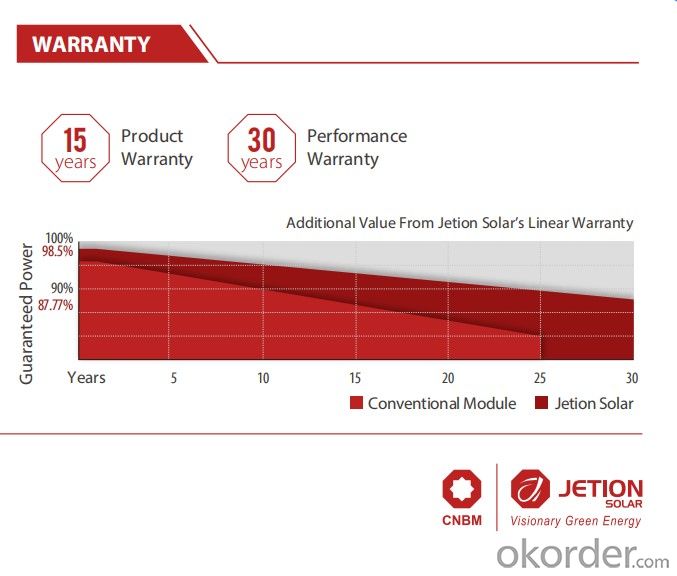
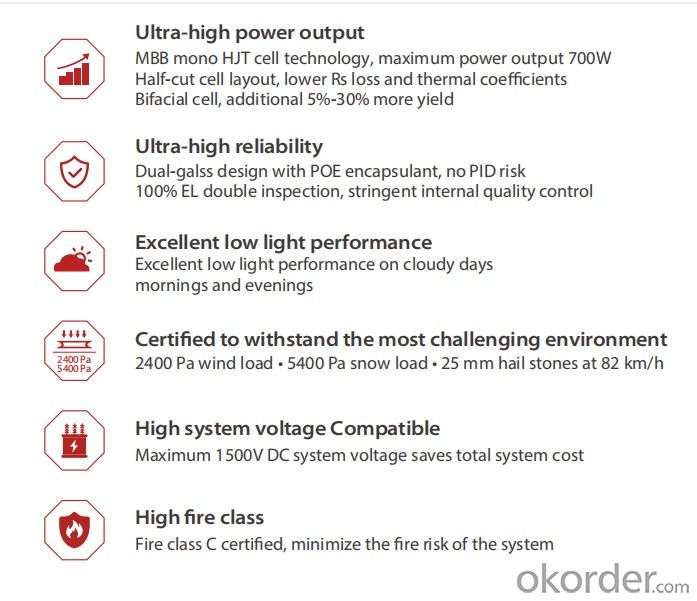
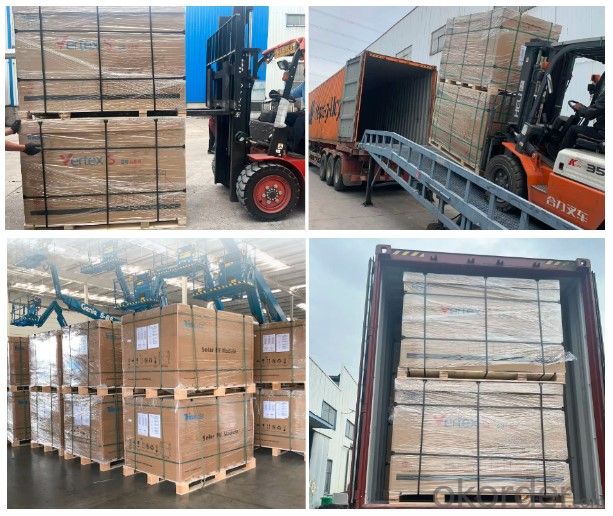
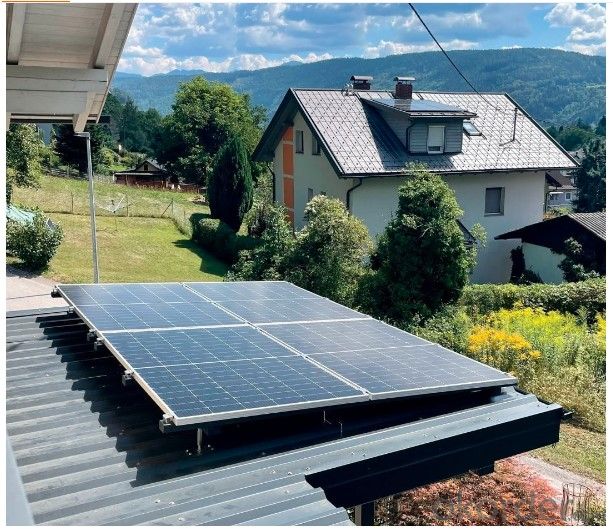
Ø FAQ
Q:How can we guarantee the products quality?
A:Always provide the esteemed buyer a pre-production sample before mass production; Always testing every product before despatching the shipments;
Q:What products we can supply you?
A:Solar Panel,Inverter,Mounting System,Battery,PV Cable,Distributor Box,Pv Connector,Etc
Q:Where is your Manufacturer located? How can I visit there?
A:Our factory located in 501, Building 1, No. 600, Tongjiang Middle Road, Changzhou City, Jiangsu Province,China
Q:Can the products pricing be cheaper?
A:Of course, you will be offered a a very good discount with large quantities.
Q: Can print our company‘s logo on the PV panels?
A:Yes! And we accept the OEM&ODM orders.
- Q: How do solar panels impact the aesthetics of a building?
- Solar panels can impact the aesthetics of a building in both positive and negative ways. On one hand, when designed and installed properly, solar panels can enhance the overall appearance of a building by giving it a modern and eco-friendly look. Additionally, the sleek and reflective surface of solar panels can add a visually appealing element to the design. On the other hand, some people may find the presence of solar panels on a building to be visually unappealing, especially if they disrupt the architectural harmony or contrast with the surrounding environment. Ultimately, the impact of solar panels on a building's aesthetics is subjective and depends on individual preferences and the integration of the panels into the overall design.
- Q: Can solar panels be installed on military installations?
- Yes, solar panels can be installed on military installations. In fact, many military installations around the world have already embraced solar energy as a sustainable and cost-effective solution for meeting their power needs. Solar panels help reduce reliance on traditional energy sources, provide a more secure and resilient energy infrastructure, and contribute to the overall goal of creating a greener and more sustainable military.
- Q: What materials are solar panels made of?
- Solar panels are typically made of silicon, which is a semiconductor material, along with other components such as metal frames, glass, and protective layers.
- Q: How do solar panels affect the overall energy consumption of a building?
- Solar panels can significantly reduce the overall energy consumption of a building. By harnessing renewable energy from the sun, solar panels generate electricity, which can be used to power various appliances and systems within the building. This reduces reliance on traditional energy sources, such as fossil fuels, thereby lowering the building's energy consumption from the grid. Additionally, excess energy produced by solar panels can be stored in batteries or fed back into the grid, further offsetting the building's energy consumption. Overall, solar panels contribute to a more sustainable and energy-efficient building by reducing its overall energy needs.
- Q: If I wanted to add solar panels to my home to produce on average, 8 kWh of electricity daily, how much do you estimate it would cost using state of the art technology?I live in Virginia (Washington DC Metro Area), and I have Dominion Power. I pay the following electric rates:Jun-Sep $0.0904/kWhOct-May $0.0776/kWhAnnual Ave: $0.0824/kWhDistribution charges add on approximately another $0.0228/kWh.How long would the ROI for an 8 kWh/day solar system be?
- Figure 8 hours of sun per day, so 8 kW-hr is a rate of kW, which is a medium sized panel, probably not enough to operate your house totally, unless you have a very small unit. Averaged over 24 hours, that is power at a rate of only 300 watts, enough for a TV. Average US home use is .2 kW, which over 24 hours is 29 kW-hr, plus you need extra for cloudy days, peak demands, and to charge batteries. You have to decide off-grid or on-grid, and if you want to (and are allowed to) sell excess power to the power company. Off gird, the cost of batteries and charge controller are a large part of the cost. On-grid, you have to purchase equipment approved by the power company to match your power with the grid. Panels will cost about $3 per watt, so for 000 watts that is $3000. Double that for installation, then add in cost of charge controller, inverter, batteries, etc. The last items depend on your alternatives, see paragraph above. .
- Q: How much space is needed to install solar panels?
- The amount of space needed to install solar panels varies depending on the size and quantity of panels being installed. On average, a single solar panel requires about 15-20 square feet of space. However, it's important to consider factors like panel orientation, shading, and energy requirements to determine the exact space needed for an installation.
- Q: Can solar panels be installed on a flat roof?
- Yes, solar panels can be installed on a flat roof. In fact, flat roofs are often considered ideal for solar panel installations due to their easy accessibility and potential for optimal sun exposure. Additionally, there are various mounting systems available that can be used to securely attach solar panels to flat roofs.
- Q: Can solar panels be installed on golf courses or recreational facilities?
- Yes, solar panels can be installed on golf courses or recreational facilities. These locations often have vast open spaces with ample sunlight, making them ideal for harnessing solar energy. Additionally, installing solar panels in these areas can help offset the energy demands of the facilities, reduce carbon emissions, and promote sustainability.
- Q: Can solar panels reduce electricity bills?
- Yes, solar panels can reduce electricity bills. By harnessing the sun's energy to generate electricity, solar panels can offset a significant portion of a household's electricity consumption, leading to lower monthly bills. Additionally, excess energy produced by solar panels can be fed back into the grid, allowing homeowners to earn credits or receive payments from utility companies.
- Q: Can solar panels be installed on a theme park or tourist attraction?
- Yes, solar panels can be installed on a theme park or tourist attraction. In fact, many theme parks and tourist attractions have started to incorporate solar panels as a way to generate clean and sustainable energy. Solar panels can be installed on rooftops, parking lots, or even as part of decorative structures within the park. This not only helps to reduce the environmental impact of the attraction but also serves as a visible display of the commitment to renewable energy, inspiring visitors to consider sustainable practices in their own lives.
Send your message to us
Black Solar Module 700W Monocrystalline Panel Solar 680 Watt 700 Watt Half Cells Solar ModuleNCQ
- Loading Port:
- SHANGHAI
- Payment Terms:
- TT OR LC
- Min Order Qty:
- 10 pc
- Supply Capability:
- 100 pc/month
OKorder Service Pledge
OKorder Financial Service
Similar products
Hot products
Hot Searches
Related keywords
